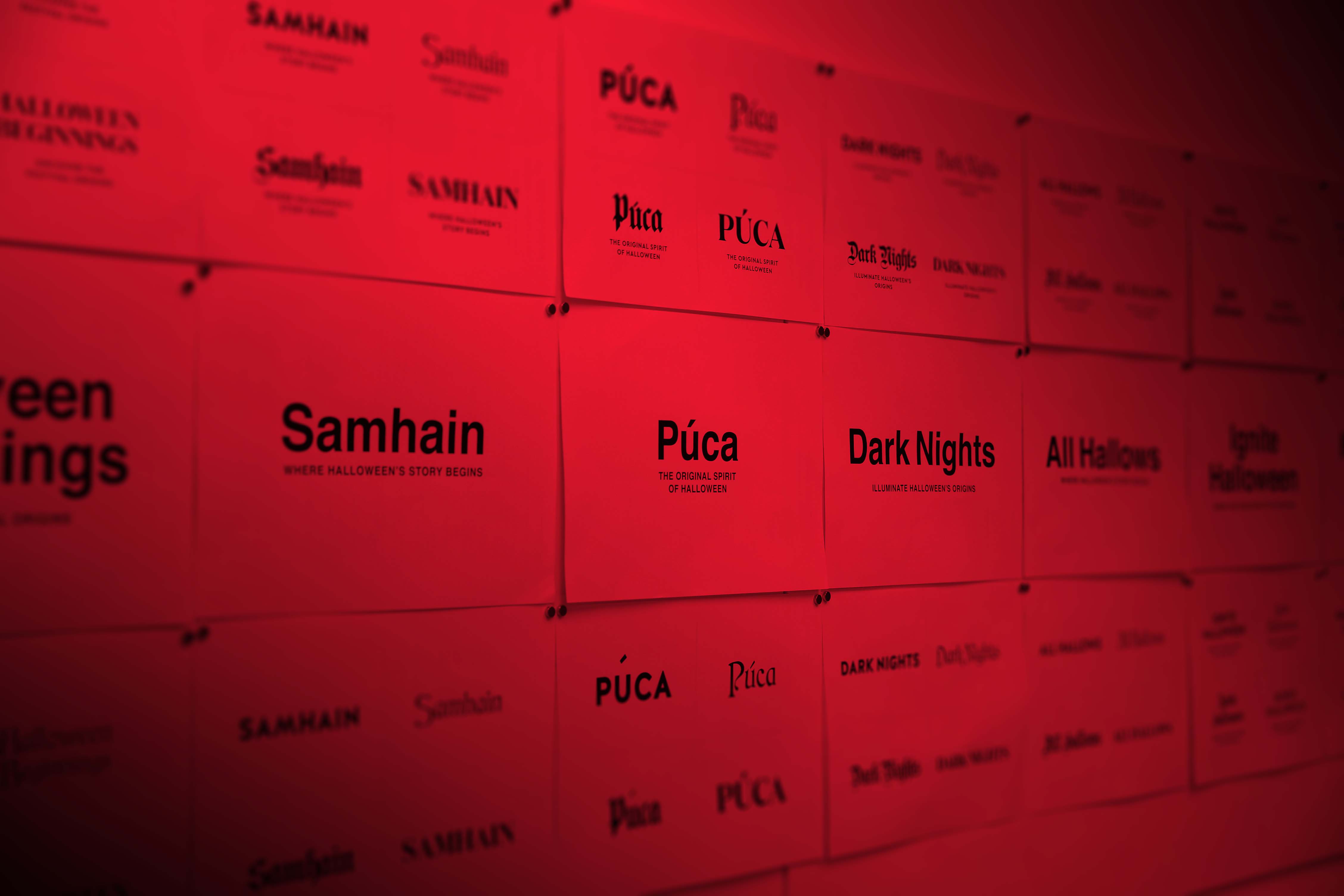Ireland’s claim to the origin of Halloween is relatively unknown amongst an international audience. Fáilte Ireland recognised this as an opportunity to celebrate the festival at its source and grow tourism at a typically quiet time of year.
Obviously, Halloween is a well-recognised event in the western world and one with its own very distinct, name, rituals and iconography – but how do you create a name for the festival that won’t get lost in the Halloween noise, a name that stands out as an authentic and captivating event.
The first task with naming is to establish the opportunities, challenges and criteria for the name. This criteria is built on by the stakeholders who have a view on what the name is and what the name needs to do. Criteria for naming can include looking at some of the following questions:
- Is it distinctive from the many festivals at the time of year?
- Is it ownable? Halloween has become popularised and generic, a festival name needs to encompass the characteristics that establishes its own narrative.
- Is it defendable – can it be stood over as genuine and meaningful ?
- Is it easy to pronounce? Is it a name that works for international audiences? How it is pronounced cannot be barrier, it can’t have alternative meanings.
- Is it easily understood – does it embody the spirit of Halloween?
- Is it authentic – does it build on the truths of the festival?
- Is it protectable – will the name become an owned asset that has intrinsic value?
- Does it bring to life the spirit and positioning of the festival that’s relevant to the target audience?
Early on in a naming project, it is useful to workshop potential positioning with the client to establish territories of interest and to rule out positions that are not in line with the experience. Once clear criteria and positioning is agreed, ideas that are relevant form a rich catalogue of inspiration for a name.
Once a shortlist of names is established, these are evaluated against the naming criteria developed. Each name is tested and screened with our international partners for any conflicts or negative meanings.
Our shortlist stretched from very creative names like “Unearth” to more descriptive, authentic names like “Samhain”. However, a name needs to work simply, be easy to pronounce for international visitors and ultimately, be ownable.
The final name agreed was “Púca”. Púca is authentic and rich in storytelling – it has its origins in the original Samhain traditions. Púca was described as a shape-shifting Celtic creature that received harvest offerings from the field and was considered to be a bringer of both of good and bad fortune – they could either help or hinder rural communities. As such, many people traditionally would stay indoors on Halloween night to avoid receiving any misfortune it may have brought their way. The name is short, ownable, and easy to say. It also tested well with international markets.
With consumers seeking more and more authentic experiences, this was the perfect opportunity for Ireland to take to the stage internationally with its genuine Halloween heritage. The name we developed seeks to reclaim the truths, stories and rituals of Halloween’s origins as an event and festival. It is one we believe will help to establish Ireland as the definitive place to celebrate Halloween.
